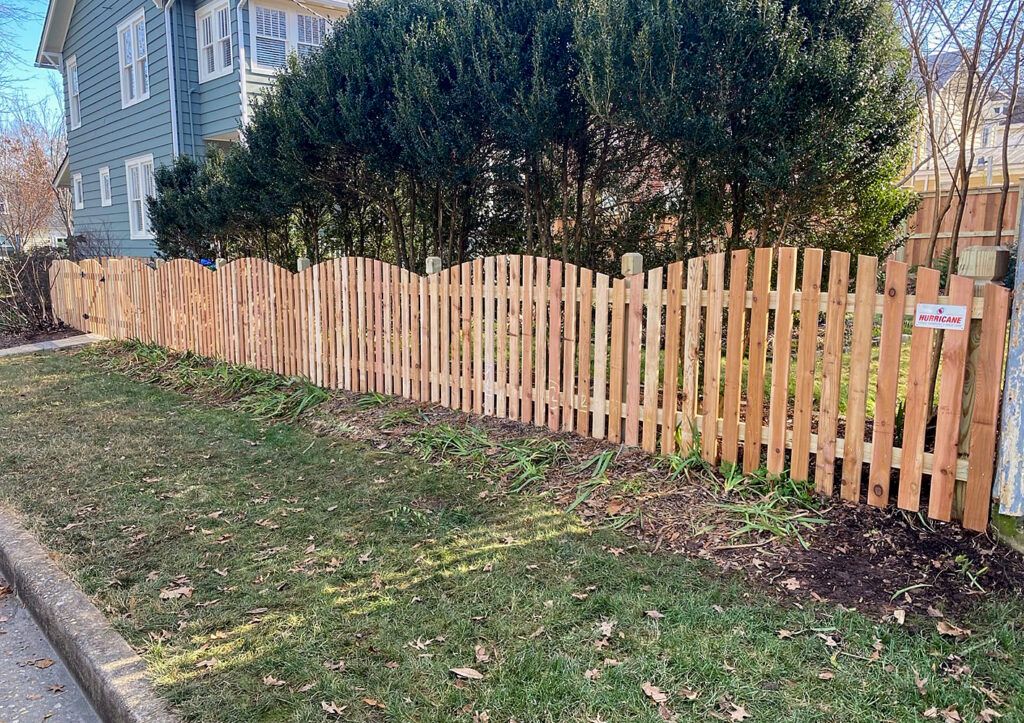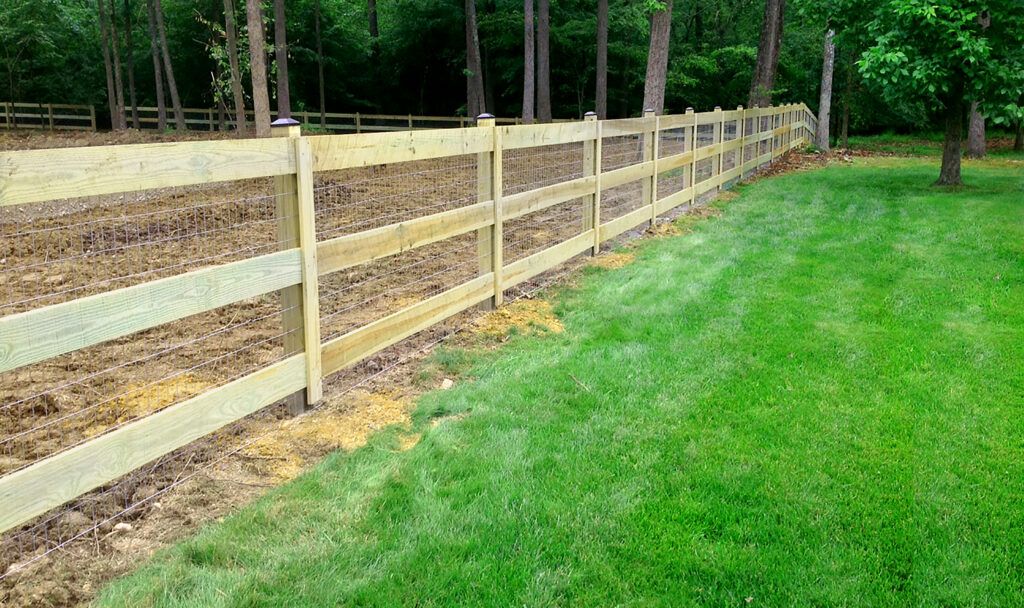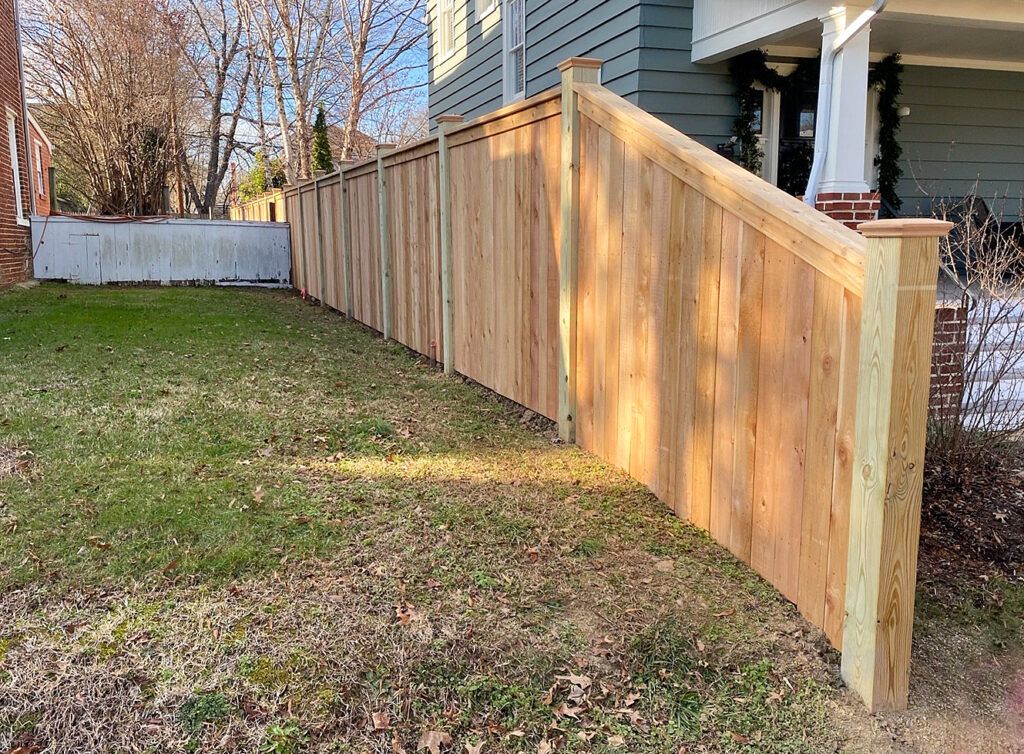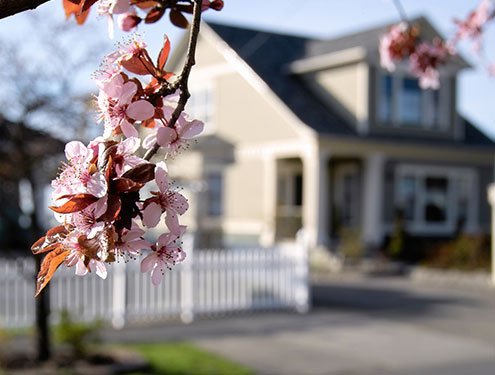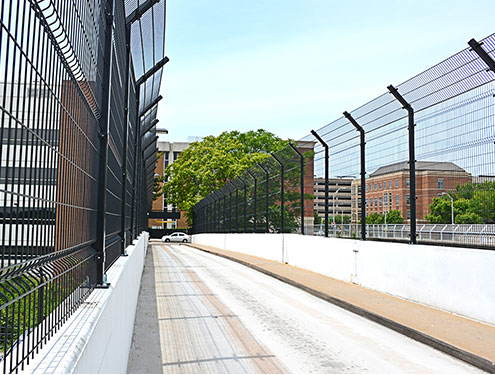Cedar vs pressure treated pine—the choice is a common dilemma for homeowners planning a fence project. Both materials are highly popular, offering unique benefits in terms of durability, appearance, and cost. Choosing the right one depends on your priorities: Are you looking for a fence with low maintenance requirements and timeless beauty? Or do you need an affordable and versatile option that can withstand harsh weather and pests with proper care?
This guide will explore the pros and cons of cedar vs pressure treated pine, their maintenance requirements, and real-world applications to help you make the right choice for your home.
Contents
Why Cedar is a Top Choice for Fences
Cedar wood is often considered the gold standard for fencing materials due to its stability, longevity, and natural beauty. Unlike many other woods, cedar resists warping, shrinking, and cracking, ensuring your fence stays intact and visually appealing for decades.
Benefits of Cedar Fencing:
Here are some of the top reasons homeowners often choose cedar for their fences:
- Durability Without Warping
Cedar’s natural oils and fine grain prevent the wood from warping or shrinking, making it ideal for picket and privacy fences that require structural integrity. - Natural Rot Resistance
Cedar contains organic compounds that resist decay and pests, allowing it to endure years of exposure to the elements without significant deterioration. Learn more about the properties of cedar wood here. - Low Maintenance
Cedar fences require less maintenance than pressure-treated pine, though occasional cleaning and staining can help maintain their rich color and prolong their lifespan. - Aesthetic Appeal
The rich aroma and warm tones of cedar make it a favorite for homeowners seeking a fence with both beauty and functionality. It ages gracefully, often developing a silvery patina over time. - Eco-Friendly Option
As a naturally pest-resistant wood, cedar doesn’t require chemical treatments, making it a more sustainable and environmentally friendly choice.
With these benefits, cedar is an excellent choice for those who value beauty, durability, and low maintenance in their fencing materials.
Drawbacks of Cedar Fencing:
While cedar is a fantastic choice for many, it’s important to consider these potential downsides:
- Higher Initial Cost: Cedar is a premium material, so it’s more expensive than pressure treated pine. However, its low maintenance needs and durability can offset this cost in the long run.
- Vulnerability to Soil Erosion: Cedar posts can rot over time when in direct contact with soil. Setting them in concrete can help mitigate this issue.
By weighing these factors, you can determine if cedar fits within your budget and maintenance expectations.
Why Pressure Treated Pine is Popular
Pressure treated pine is a budget-friendly and widely available fencing option. Chemically treated to resist rot, termites, and weathering, this wood is a practical choice for many homeowners, particularly those looking for affordability without sacrificing durability.
Benefits of Pressure Treated Pine Fencing:
Pressure treated pine is a favorite for its versatility and practicality. Here’s why it’s so widely used:
- Affordability
As one of the most cost-effective fencing materials, pressure treated pine is an excellent choice for large projects or for homeowners on a budget. - Pest and Rot Resistance
The chemical treatment process protects the wood from common issues like termite infestations, decay, and mold growth, ensuring a long-lasting fence. - Versatility
Pressure treated pine can be used for various fence designs, including picket, privacy, and ranch-style fences, giving homeowners a wide range of style options.
These benefits make pressure treated pine a reliable and economical choice for those looking to balance cost and performance.
Maintenance Needs:
While pressure treated pine is durable, it does require regular upkeep to maintain its appearance and structural integrity:
- Staining and Sealing: To prevent warping and cracking, it’s recommended to stain and seal your pine fence about six weeks after installation.
- Cleaning: Regular cleaning helps remove dirt, mildew, and other debris that can damage the wood over time.
- Periodic Re-Staining: For the best results, re-stain your fence every 1-3 years depending on exposure to sunlight and weather conditions.
By following these steps, you can extend the life of your pressure treated pine fence and keep it looking its best.
Drawbacks of Pressure Treated Pine Fencing:
Despite its advantages, pressure treated pine has some downsides to consider:
- Maintenance-Heavy: Compared to cedar, pressure treated pine requires more frequent care to prevent damage.
- Potential for Warping and Cracking: Without proper maintenance, pine fences may warp or split, particularly in areas with intense sunlight or fluctuating temperatures.
While it demands more upkeep, pressure treated pine remains a strong contender for those seeking an affordable and functional fencing material.
Cedar vs Pressure Treated Pine: What’s Right for You?
Choosing between cedar vs pressure treated pine ultimately comes down to your specific needs and preferences. Here are a few key factors to consider:
Budget:
Your budget will likely play a big role in your decision.
- If you’re working with a tighter budget, pressure treated pine is the better choice due to its affordability.
- If long-term value and low maintenance are priorities, cedar is worth the higher upfront cost.
Maintenance:
How much time and effort are you willing to invest in fence upkeep?
- Cedar requires less frequent upkeep, making it a low-maintenance option for busy homeowners.
Pressure treated pine needs regular staining and sealing to maintain its appearance and structural integrity.
Aesthetics:
Your fence’s appearance is just as important as its functionality.
- Cedar offers a natural beauty and aromatic quality that pine cannot match.
- Pine can still look attractive but benefits from staining or painting to enhance its appearance.
Longevity:
How long do you want your fence to last?
- Cedar generally lasts longer with less wear and tear over time.
- Pressure treated pine can last just as long with proper maintenance but may require more effort to keep it in top shape
Explore Our Favorite Fence Projects
Need inspiration? Here are some of our favorite projects using cedar and pressure treated pine:
- Cedar Convex Picket Fence: A timeless design with natural beauty.
- Pressure Treated Pine 3-Board with Wire Mesh Backing: Durable and functional for pets and livestock.
- Cedar Face & Cap Transition Fence: A seamless solution for varying yard elevations.
- Pressure Treated Pine Horizontal Semi-Privacy Fence: Sleek and modern with added privacy.
Ready to Build Your Dream Fence?
Still undecided on cedar vs pressure treated pine? At Hurricane Fence, we’re here to help you make the best choice for your home. Whether you value cedar’s timeless charm or pine’s practical affordability, our team has the expertise to bring your vision to life. Contact us today for a consultation, and let’s create a fence that’s perfect for your property. With locations in Richmond, VA; Portsmouth, VA; and, we’re ready to serve you.
Find some of our favorite wood fence projects below!
